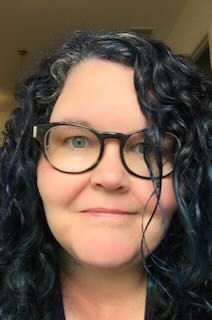"What Are We Even Doing Here?" Zork in the Classroom
April 06, 2023
Purdue University. 21st century.
An ENGL 106 assignment sits in Brightspace.
It asks you to play and respond to a text-based game from 1977.
There are no directions inside. Welcome to Zork!
>start game
Zork is the first game I assign in my Narrative and Games themed composition course. I ask students to play for at least thirty minutes before writing a response to the experience. I tell them it is an old-school text-based interactive fiction game, developed at MIT in the 1970s. I advise them to be patient and offer them an infographic guide to basic commands.
Then I set them loose. It’s not a lot to go on, but that’s part of the point.
The next class is usually abuzz. We start with small group discussion. Students trade stories, tips, and an unsurprisingly long list of complaints.
“Wait! How did you get there? I walked around those woods forever.”
“I got stuck when I turned into a ghost.”
“There was a thief?”
When we gather into a large group discussion, we work on analyzing the game and our experience. We consider Zork’s original context, and they try to imagine what it might have been like to play when it was new. We discuss how much they missed modern graphics and visual cues. They extol the virtues of a map—something modern gamers take for granted. They share their struggles to understand the game’s objective. Some enjoyed the puzzles and the exploration, but most agree that without a clear purpose, it’s less fun. We talk about the challenge of discovering the phrases that work. Some confess to engaging in the time-honored tradition of typing in swear words.
Mostly we talk about story.
The antiquated mechanics of Zork make it difficult to experience any kind of cohesive plot—and what plot exists is thin. Setting is barebones: a list of objects and location names players may or may not figure out how to use and navigate. The second-person point of view and sketchy detail limits most connections to the character. There aren’t many non-player characters and interactions with them are too brief to be satisfying. The voice of the narrator can be funny, but again, frustrations with clarity tend to muffle its charms.
Who is the audience for this?
What is the purpose?
How does the tone affect the experience?
Why is it so hard to play?
What kinds of games were available at the time?
Eventually, when those questions are chewed over, focus tends to drift to the stories we love. The move offers an opportunity to circle back to our opening week’s focus on the connections between games, literature, and writing. A childhood mainstay, the Choose-Your-Own Adventure genre, is a decent starting point for comparison. We also list other favorite genres and titles—in print, on film and television, and in games.
I admit Zork day is one of my favorites. While the discussion does tend to linger on negatives, it’s balanced by laughter. We get to bond over this experience, and it becomes a title we use as a baseline reference for the rest of the semester. Most of the games we play in the course get placed on an informal continuum ranging from Zork to Awesome. It’s a useful shorthand—and hopefully not too unkind.
Playing other interactive fiction games like absurd fan-based creations, Penrose (a game where the text changes as you read and shift between points of view) or A Dark Room (minimal, but with some resource management elements) broadens our experience and allows for even more comparisons.
Eventually, I assign the “Video(less) Games” episode of the podcast Twenty Thousand Hertz. It’s about accessibility in video games and one of the segments focuses on audio games. The hosts share a sample of an early text-to-speech title: Zork 2. And the students get the reference. It’s a pleasure to witness the connections they make and the directions they take the discussion.
Playing Zork encourages better appreciation for the rich narratives of modern games.
Playing Zork helps a class create stories together.

Wendy Hammer received her B.A. in English from the University of Wisconsin-Madison and her M.A. in literature from Ball State University. She has taught composition, literature, and creative writing for over twenty years. For fun and the occasional modest profit, she writes speculative fiction. She has shelves full of games and a perfectly reasonable number of shiny dice to play them with.
